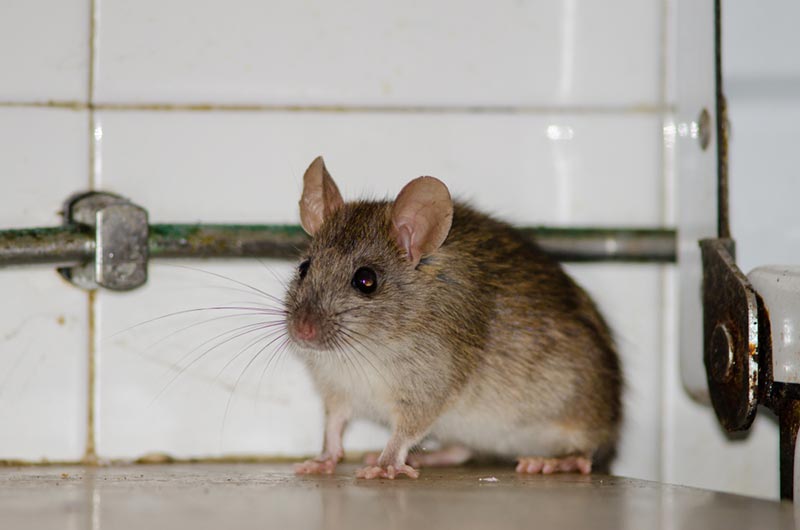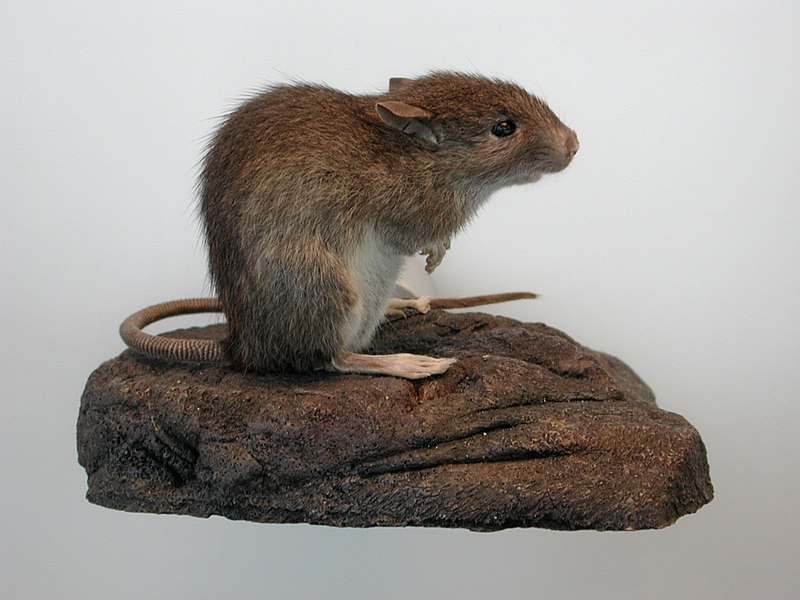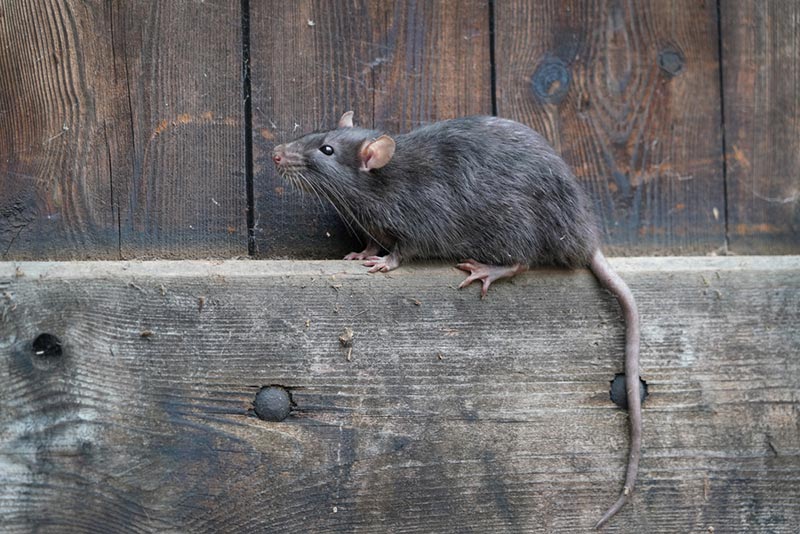Rats in New Zealand: Types, Facts & Tips for Homeowners
-

- Last updated:

Dealing with rats can be a worrying and serious task, especially for homeowners in New Zealand. Rats are annoying rodents that can destroy your garden or home. They tend to nest in basements, attics, and storage spaces. Before trying to get rid of the rats in your home, learning about the different species of rats in New Zealand is essential. Knowing the exact species will give you an advantage.
The article below shows the three most common types of rats in New Zealand and some interesting facts about the rodents. If you want to learn how to deal with rats, you can also find some helpful tips at the end of the article.
3 Types of Rats in New Zealand
1. Ship Rats

| Scientific name: | Rattus rattus |
| Common names: | Roof rat, black rat, house rat |
| Size: | 5 to 7.2 inches |
| Characteristics: | Light-brown or black fur, white or single-colored belly, and hairless ears. Tail longer than the length of the body and head. |
Ship rats are the most common type of rodent found in New Zealand. The slender light-brown body, round hairless ears, and characteristically long tail make them easily recognizable. They can usually be spotted in homes and almost anywhere near humans. Ship rats originated from India but in the late 19th century found their way to New Zealand.
While ship rats are widespread across the three main islands of New Zealand and many offshore islands, they have particular preferences regarding their habitat. They enjoy dry areas, where they can avoid swimming. Ideally, they are herbivorous, although when water and food sources are low, they feed on both plant and animal matter, making them omnivorous.
2. Kiore or Pacific Rats

| Scientific name: | Rattus exulans |
| Common names: | Little rat, Polynesian rat, Pacific rat |
| Size: | Up to 6 inches |
| Characteristics: | Smaller than other types of rats, brown body with a white and gray underside. |
Kiore rats are the smallest rodents found in New Zealand, with brown fur and white or grayish undersides. Kiore are believed to have originated from South-East Asia when the Māori—Polynesian ancestors—brought them to New Zealand by ships in the 13th century.
Kaori rats emerge during nighttime to feed; they usually stay hidden in holes in the ground and hollow tree trunks by day. Sometimes Kiore rats are confused with ship rats due to their similar fur color, although Kiore rats are smaller than ship rats with shorter tails.
3. Norway Rats

| Scientific name: | Rattus norvegicus |
| Common names: | Brown rat, street rat, sewer rat |
| Size: | 9.5 inches without the tail |
| Characteristics: | Large body, with small ears and eyes and a shorter tail. The fur is brown; the nose is blunt. |
The Norway rats are also called brown rats and are the largest rodents found in New Zealand. They were introduced to New Zealand in the late 18th century on European sailing ships. They are easily differentiated from other rat types due to their large and heavy body, brown fur, and blunt nose.
Their tail is much shorter than a ship rat’s, and their ears and eyes are also smaller. Norway rats are incredibly good at swimming and have great stamina, allowing them to swim up to half a mile. Norway rats are always associated with human activity and can be found in many urbanized areas, posing a significant impact on New Zealand’s ecosystem.
6 Facts About Rats in New Zealand
Rats are unique creatures with fascinating behavior and skills. Below you can find some of the most interesting facts about rats, their behavior, cleverness, and different abilities.
1. Rats use their whiskers to orient and balance themselves.
Rats use their whiskers to create a better visual image of their surroundings. They brush them against objects in their path or the floor, helping them orient themselves. Rat whiskers are much more sensitive than human fingertips.
2. Norway rats can swim up to 72 hours.
Norway rats are excellent swimmers that thrive in water. They can swim from 50 to 72 hours before they become exhausted. They can dive underwater for around 30 seconds without oxygen.
3. Rats can show empathy.
Due to their excellent memory, rats remember which rats helped them in the past and tend to return the favor. They habitually share their food and offer as much as possible to the hungriest rats.
4. Norway rats are not from Norway but from Asia.
Contrary to their common name, Norway rats originated from northern Asia and were spread worldwide by shipping and trade.
5. Rats are very intelligent beings.
Rats can be trained to perform different tasks, such as responding to their name, fetching a ball, or rolling over. Rats have also been trained in the past to detect land mines and explosives.
6. Rats eat around 10% of their body weight daily.
Rats usually feed on any food they can scavenge in their surroundings, eating around 10% of their body weight daily. They are frequently competing with other species for food.
Tips on How to Deal with Rats in New Zealand
Dealing with rats daily can be challenging and quite tiresome. If you live in an area where rats are a common nuisance, especially in New Zealand, you might want to learn some methods to deal with them. We have several tips to help you get rid of rats and create a clean and safe environment in your home.
- The most important thing to remember when dealing with rats is to eliminate any possible food sources and possible nesting sites.
- Clear out your backyard, garage, or shed. Rats nest in piled bricks, lumber, rubbish, and any neglected and overgrown parts of the property.
- Make sure to remove any pet food or bird food before nightfall, as rats will feed on them.
- Clear out areas of your home you use for storage, such as basements, attics, spare rooms, and any areas where you may accumulate old boxes, furniture, rags, and other materials.
- Seal any possible entries to your home property, especially vents, windows, and doors.
In Conclusion
After learning the types of rats and some fascinating facts about them, you will hopefully gain a different perspective on rodents. These creatures are brilliant, and the reason behind their destructive behavior is often their cleverness in finding shelter and food. While they are rodents and often destructive, some interesting parts about their lives and behavior make them unique.
Featured Image Credit: Carlos Aranguiz, Shutterstock
Contents


